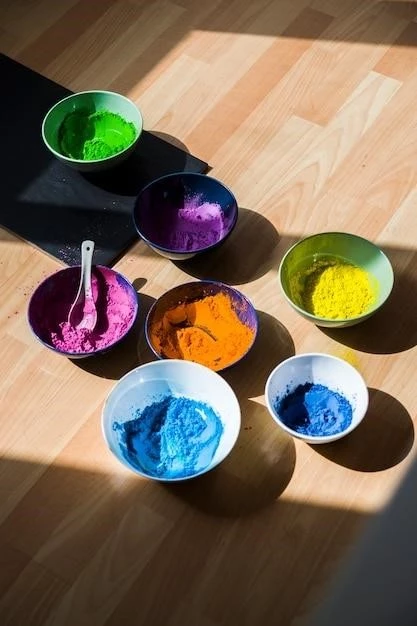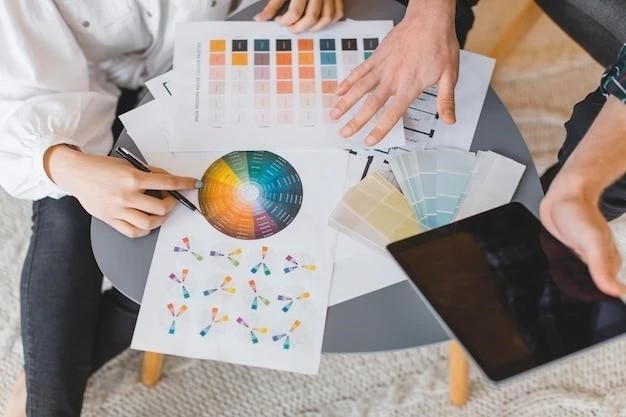The Science of Color: How We Perceive and Use It
Color. It’s everywhere‚ influencing us in ways we often don’t even realize. As an amateur artist‚ I’ve always been drawn to the power of color‚ how it can evoke emotions‚ shift perspectives‚ and even alter the perceived taste of food. Recently‚ I decided to delve deeper into the science behind this phenomenon‚ exploring the fascinating world of color perception and its impact on our daily lives.
The Biology of Seeing Color
Our journey begins with understanding how we physically see color. It all starts with light. Contrary to what we might think‚ color isn’t inherent in objects themselves‚ but rather a product of how they reflect light. When light hits an object‚ some wavelengths are absorbed‚ while others are reflected. These reflected wavelengths are what our eyes perceive as color.
Inside our eyes‚ specialized cells called cones are responsible for color vision. Humans typically have three types of cones‚ each sensitive to a different range of wavelengths: short (blue)‚ medium (green)‚ and long (red). The varying stimulation of these cones allows us to perceive the vast spectrum of colors we see.
Beyond the Retina: The Psychology of Color
While our eyes provide the physiological basis for color vision‚ the true magic happens in our brains. Color perception is a complex process influenced by a multitude of factors‚ including our individual experiences‚ cultural background‚ and even our current mood.
The Power of Association
I recently repainted my bedroom a calming shade of blue. Instantly‚ I noticed a difference in the atmosphere. The room felt more tranquil‚ conducive to relaxation and sleep. This transformation highlights the power of color association. We subconsciously link colors to specific emotions and experiences. Blue‚ often associated with the sky and ocean‚ evokes feelings of peace and serenity.
Similarly‚ green‚ reminiscent of nature‚ is often linked to growth‚ harmony‚ and freshness. Red‚ on the other hand‚ being the color of blood and fire‚ can evoke feelings of passion‚ excitement‚ but also danger and aggression.
Cultural Context Matters
It’s important to note that color associations aren’t universal. They can vary significantly across cultures. For example‚ while white is often associated with purity and innocence in Western cultures‚ it can symbolize mourning in some Eastern cultures.

Putting Color Psychology into Practice
Understanding the psychological impact of color has profound implications in various fields‚ from marketing and branding to interior design and art.
Marketing and Branding: Speaking Through Color
Companies leverage color psychology to influence consumer behavior. Think about some of the most iconic brands: the vibrant red of Coca-Cola‚ the calming blue of Facebook‚ the trustworthy brown of UPS. These color choices aren’t arbitrary. They’re carefully selected to evoke specific emotions and brand associations.
For example‚ I recently launched a website for my freelance writing business. Choosing the right color palette was crucial. I opted for a combination of blue and green‚ aiming to project a sense of reliability‚ creativity‚ and growth.
Interior Design: Shaping Spaces with Color
As I discovered with my bedroom makeover‚ color plays a crucial role in shaping the ambiance of a space. Warm colors‚ like red‚ orange‚ and yellow‚ tend to create a more energetic and inviting atmosphere‚ making them suitable for social spaces like living rooms and kitchens.
Cool colors‚ like blue‚ green‚ and purple‚ have a calming and relaxing effect‚ making them ideal for bedrooms and bathrooms. Neutral colors‚ like white‚ gray‚ and beige‚ provide a versatile backdrop and can be combined with bolder accent colors to create different moods.
Art: Expressing Emotions and Ideas
In art‚ color transcends its decorative function and becomes a powerful tool for expression. Artists use color to convey emotions‚ evoke moods‚ and guide the viewer’s eye. Think of Van Gogh’s vibrant yellows and blues‚ expressing both joy and melancholy‚ or Picasso’s Blue Period‚ reflecting a somber and introspective phase.
In my own artwork‚ I’ve been experimenting with using color to create depth and movement. By juxtaposing warm and cool colors‚ I can make objects appear closer or farther‚ adding a sense of dimension to my paintings.

The Ongoing Exploration of Color
The science of color is a vast and fascinating field with ongoing research constantly revealing new insights into how we perceive and interact with color. From the biological mechanisms of our eyes to the complex interplay of cultural influences and personal experiences‚ color continues to shape our world in profound ways.
As I continue to explore the world of color‚ I’m constantly amazed by its power and versatility. Whether I’m painting‚ designing a website‚ or simply observing the subtle interplay of hues in nature‚ color enriches my life‚ adding layers of meaning and beauty to the everyday.










